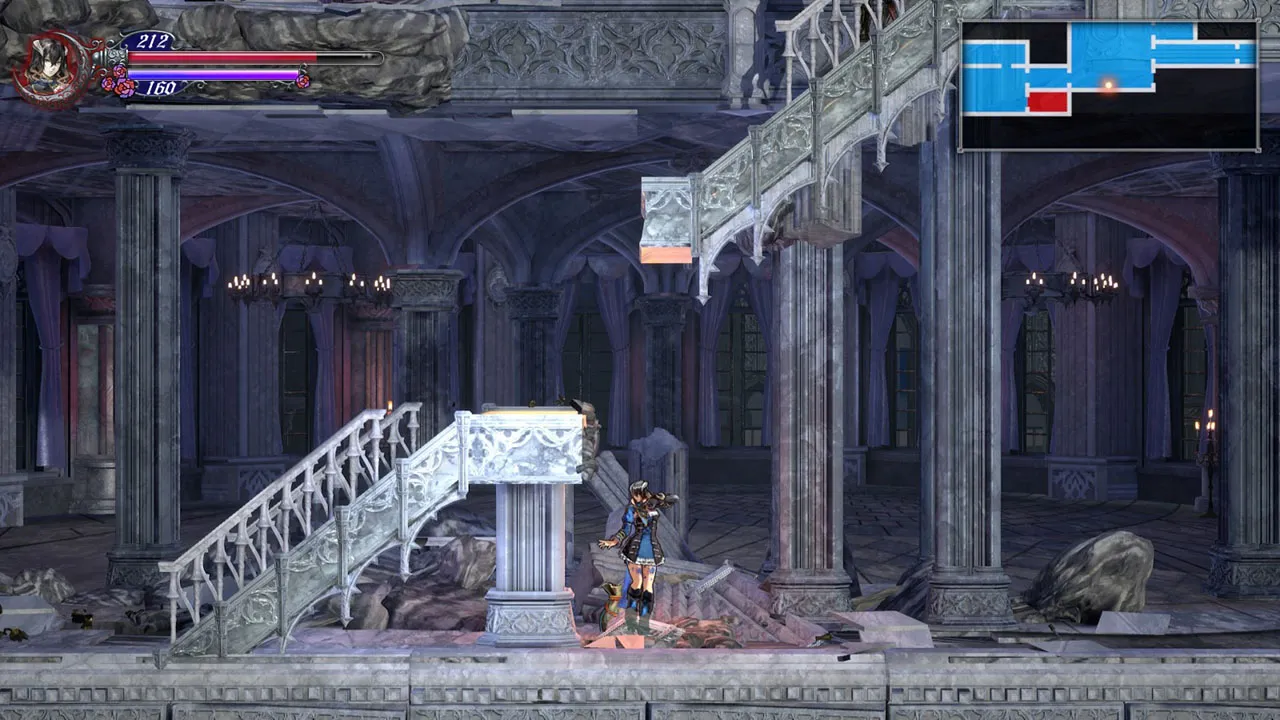
Bloodstained: Ritual of the Night – A Worthy Successor to Castlevania?
Contents
The name Castlevania resonates with many gamers. While perhaps not as widely recognized as Mega Man or Final Fantasy, it holds a special place in gaming history. Blending platforming and action, Castlevania carved its own unique niche, ultimately merging with the Metroid series to create the “Metroidvania” genre. These games are characterized by sprawling interconnected maps filled with secrets, requiring players to backtrack and explore thoroughly to uncover hidden areas and defeat a diverse array of enemies.
Originating in 1986, the Castlevania series has experienced its share of ups and downs. It arguably reached its peak under the direction of Koji “IGA” Igarashi, with acclaimed titles like Symphony of the Night (1997), Harmony of Dissonance (2002), and Dawn of Sorrow (2005). Igarashi’s creative vision became synonymous with the series, much like Shigeru Miyamoto with Mario and The Legend of Zelda, or Hideki Kamiya with Devil May Cry.
After a few 3D installments like Lords of Shadow in 2012, the series went quiet. Igarashi’s departure from Konami in 2014, due to disagreements over the company’s shift towards mobile gaming, seemingly signaled the end of an era.
However, Igarashi wasn’t ready to let Castlevania fade away. He embarked on a new path, resulting in Bloodstained: Ritual of the Night. This ambitious project, conceived in 2014 and released in 2019, quickly achieved its Kickstarter goal, demonstrating the immense community support for Igarashi’s vision. Launching on June 26, 2019, for PlayStation 4, PC, and Nintendo Switch, Bloodstained: Ritual of the Night garnered critical acclaim, solidifying its position as a true Castlevania successor. This review focuses on the Nintendo Switch version, offering a unique perspective.
A True Castlevania Experience
Departing from the Castlevania narrative centered on the Belmont clan’s feud with Dracula, Bloodstained: Ritual of the Night tells a simpler story of revenge. A “shardbinder,” once exploited to open a demonic portal, seeks vengeance, while another shardbinder strives to stop them. This streamlined narrative allows other elements to shine.
Castlevania‘s strength lies in its sprawling, gothic castles, interconnected by countless rooms and secrets. Bloodstained: Ritual of the Night faithfully recreates this, offering even more ways to interact with the environment. Shattering walls, exploring cracks in the ceiling, or plunging into chasms can lead to hidden rooms not even marked on the map. These explorations are often rewarded with valuable items like health and mana upgrades or crafting recipes.
 Bloodstained
Bloodstained
 Bloodstained
Bloodstained
Moving beyond the familiar Dracula and dark army theme, Bloodstained: Ritual of the Night draws inspiration from the “72 demons of King Solomon” (Goetia). This allows for more creative enemy designs and intriguing backstories. Names like Dantalion, Baal, and Barbatos certainly resonate more than the generic “Skeleton” or “Zombie.”
Despite its new setting, Castlevania veterans will feel right at home. The core gameplay loop remains intact: explore the castle, battle enemies, navigate branching paths, encounter obstacles requiring new abilities (like double jump or air dash), and backtrack to previously inaccessible areas. Bloodstained: Ritual of the Night successfully captures the essence of classic Castlevania.
 Bloodstained
Bloodstained
Refined and Enhanced Gameplay
Castlevania never emphasized flashy combat, instead opting for a more grounded approach. Bloodstained: Ritual of the Night maintains this philosophy, adding new elements to enhance the experience. Players can equip a diverse arsenal, from swords, daggers, spears, and axes to guns, whips, and even high heels. Each weapon has unique damage, range, and speed, making certain weapons more effective against specific enemies. While basic attacks are simple, players can discover hidden techniques to expand their combat options.
Building upon Dawn of Sorrow, Bloodstained: Ritual of the Night incorporates a robust shard system. By defeating enemies, players collect Demon Shards, which can be equipped to grant new abilities, both offensive and passive. With dozens of shards to collect and upgrade, players can customize their playstyle to great effect. However, shards have varying drop rates, so acquiring specific ones requires some grinding.
RPG elements in Castlevania were often superficial, primarily limited to leveling up and equipping gear. Bloodstained: Ritual of the Night expands on this with crafting and upgrading, allowing for deeper customization. Equipment not only affects stats but can also alter weapon functionality. Furthermore, the game features cosmetic customization options, including hairstyles and colors, offering greater player expression.
Technical Hiccups on the Switch
Ironically, the Nintendo Switch version, despite being the best-selling, suffers from the most technical issues. Whether due to the Switch’s hardware limitations or optimization issues, the graphical quality, especially in handheld mode, is noticeably inferior to the PlayStation 4 and PC versions. Even docked, the visuals fall short.
 Bloodstained
Bloodstained
Input lag is another significant problem. While the PC and PlayStation 4 versions have a manageable 32-35ms delay, the Switch version suffers from upwards of 140ms, impacting responsiveness and fluidity. Load times are also considerably longer, sometimes exceeding 20 seconds, particularly noticeable during transitions between areas. Imagine the frustration of a missed jump requiring a 20-second loading screen before trying again.
 Bloodstained
Bloodstained
Beyond hardware-related issues, the Switch version also has several bugs. In one instance, a boss glitched through a wall and disappeared, requiring a restart. Extended handheld play sessions can lead to overheating and crashes.
Conclusion
Despite its technical shortcomings on the Switch, Bloodstained: Ritual of the Night successfully captures the spirit and gameplay of classic Castlevania. Its engaging exploration, deep customization options, and satisfying combat make it a worthy successor. However, players seeking the optimal experience should consider other platforms.





Comments (0)